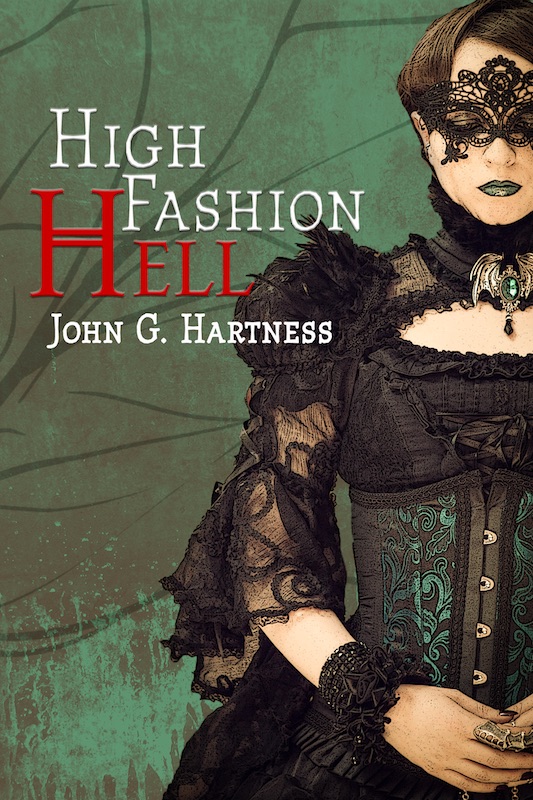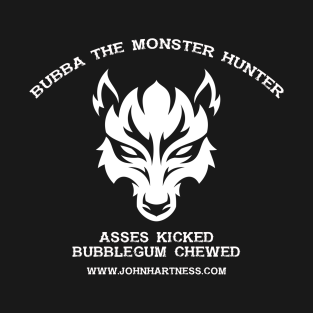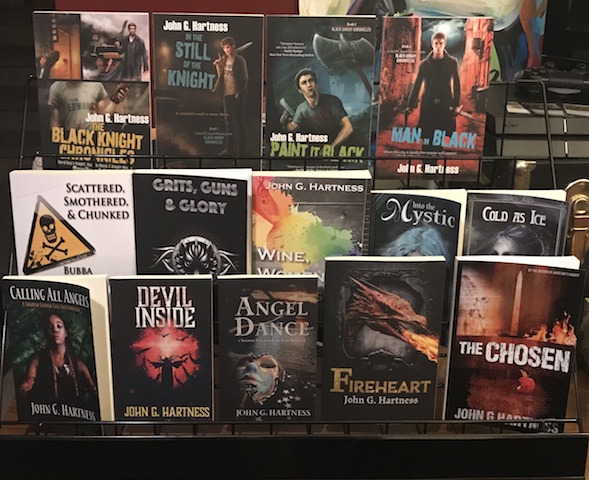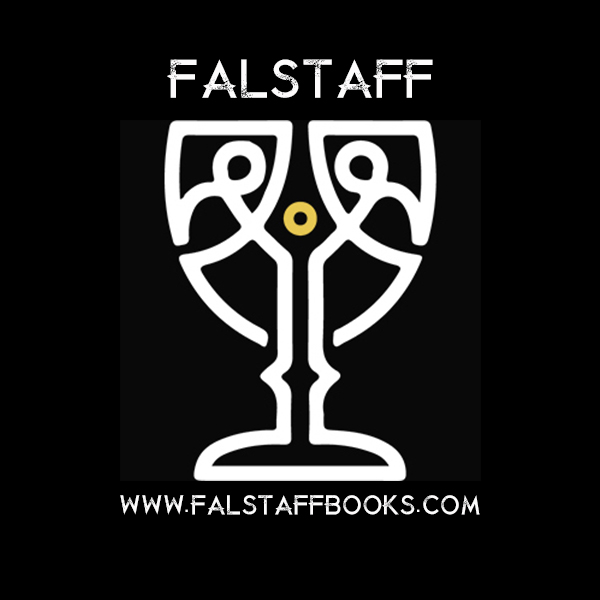
by john | Nov 2, 2017 | #HoldOnToTheLight, Real Life
Yeah, that’s a picture of my wrist.
Yeah, I have a semicolon tattoo.
Yeah, I have lost friends to suicide.
Yeah, I have had suicidal feelings at times.
No, I’ve never attempted suicide.
No, I don’t have suicidal thoughts anymore, nor have I for several years.
No, this isn’t a “cry for help,” or any other random way of me looking for sympathy for my past, current, or future issues with depression, bipolar disorder, or anything else.
This is me talking about my tattoo, who it’s for, why it’s there, and what wearing it has meant for me.
This tattoo is for my uncle, who took his own life while his wife folded laundry on the porch. This tattoo is for my actor friend who survived not only the suicide of his father, but also his twin brother, and grew up to be one of the strongest, most talented motherfuckers I know. This tattoo is for my pal Logan, whose demon won the fight one dark night. This tattoo is for every writer on the Mid-South con circuit who woke up one morning thinking “What could I have done to make it better?” This tattoo is for my friend Dave whose life caught up with him and overwhelmed him. This tattoo is for my poker buddies who sat around a table with me wondering “How could he?” then listened in shock as I explained exactly how he could, and what it felt like on the inside of that struggle when everyone around you is completely unaware that you’re even fighting.
If there’s anyone that’s a better liar than an addict, it’s a high-functioning depressive. And if you want to talk about a dubious fucking honor, that’s one right there.
I put this semicolon on my wrist earlier this year. My buddy James R. Tuck did it, along with other tattoo work. James is my brother from another mother, a helluva writer, and a good man. When he asked me which way I wanted the tattoo to point, I didn’t know.
“Is it for you, or is it for other people?” he asked.
I didn’t know the answer. But in the moment, I said “For me.” And he oriented the tattoo so that every time I look at my wrist, I’m reminded that I’m still here because I have shit left to do. I’m not finished, and I’m too arrogant and stubborn to think that anyone could carry on my projects without me. So I guess I’ll stick around.
All of that still holds true. But since I put that tattoo on my wrist, a funny thing has happened. Funny, and heartbreaking at the same time. When they see mine, they show me theirs. It’s like we’re part of this odd club – the survivors. I’ve had gas station cashiers roll up their sleeves out of the blue, waitresses hike up their uniform pants to show me an ankle, and more than one person at a con give me a questioning look before showing me their ink.
Yeah, I’ve been there. I love and hate that I’m part of this club. I love it, because there’s a network of people wearing this tattoo and talking about their pain and their issues. I love it, because every time we have an open conversation about mental health it helps erase the stigma associated with it, and that can lead to someone getting the help they need before they become another statistic. I hate it, because it means that a lot of other people have spent a lot of time hurting, and I really wish that weren’t true.
But if I can bring more attention to the fact that a lot of people have earned their semicolons, whether they have a tattoo or not, then it’s worth a sometimes-awkward conversation. If you aren’t familiar with Project Semicolon, their website is here. It horribly ironic that the founder of this website and movement lost her battle with depression and suicidal ideation, showing that it’s a never-ending struggle.
I’m okay. This has been a good week, following a good month. Not a great month, but a good one. I’m consistently hovering around a 4-7 out of 10 on my personal wellness scale, where 10 is amazeballs and 1 is dead. My lowest in recent history has been a three, which is pretty good. My highest has been a nine or so, which is awesome. Most days I’m on the high side of the scale, which is great. So I’m okay. But if you aren’t okay, please understand that there are people out there who have been there, who give a shit, and would like to see you around for a long time. So if you need help, find help. There are a lot of resources out there, and a lot of resources on the #HoldOnToTheLight website.
You story isn’t finished yet; keep on writing it.
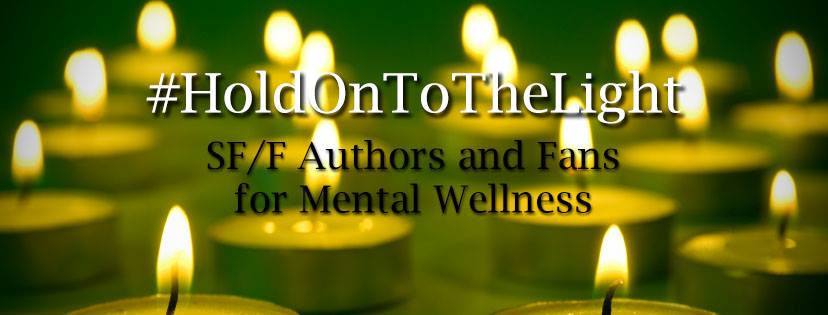
by john | Mar 8, 2017 | #HoldOnToTheLight, Real Life, Writing
People sometimes ask me how I’m so productive, how I manage to turn out a novella every month, plus run a publishing company, and do a couple of podcasts each month, and attend an average of 1.5 conventions each month, and do all the other shit I do.
The answer is – productivity through mental illness.
No joke, no bullshit, I am mentally ill and that is how I get so much shit done.
When I am able to do anything at all.
I self-diagnosed myself with depression when I was a teenager. I didn’t go see a doctor, or talk to a therapist, or do anything healthy to deal with it for almost thirty years. Last year, after dealing with depression for years, and after realizing that it wasn’t just depression, but I also had episodes of super-manic activity that were often equally damaging to my life, I self-diagnosed with Bipolar II disorder. This is not the bipolar that leads to throwing things in tantrums, or driving across multiple states wearing a diaper to murder the spouse of your astronaut lover. That’s Bipolar I.
This is the bipolar that vacillates more slowly, sometimes having month-long or multiple months-long episodes of depression, alternating with equally long episodes of mania. The depressive episodes are marked by hypersomnolence (sleeping all the time), lack of enjoyment in things you generally enjoy, lack of energy, and general malaise. The manic episodes are marked by lack of sleep, irritability, judgmental tendencies, waspishness, and hyperproductivity.
After a couple of meetings with a psychologist and some testing, my personal diagnosis was confirmed, and added to – ADHD along with Bipolar II. So I went on drugs. I take one pill every morning, and the idea is just to keep my shit regulated, to knock the tops off the highs and the bottoms off the lows. As I said to my GP, who is the one I talk to now about my meds, I’m not currently under psychiatric care (although given the fact that I don’t think I need it, I probably do), I just want to keep life on a range between a 3 and a 9, instead of a 1 to a 12.
The drugs I’m on haven’t done much to mitigate the current manic episode, I still don’t often sleep more than five hours each night, but I am less irritable, so that’s something. What the drugs have done is really helped with the depressive episodes. I had a pretty rough depressive episode in November, then another in January. December was okay, and February was pretty level. I was still able to work during November and January, and that’s probably mostly thanks to the drugs. In the past, when I had a depressive incident, I didn’t write at all, and that’s no good for someone with as many deadlines as I have, and someone who lives month-to-month from the fruits of their writing. A period last summer of no writing made for a couple of very tight months in the early fall.
About halfway through February, I felt the restlessness start to pick up, and I knew I was coming into a manic time. So I upped my daily word count, and I’m now writing as fast as I can to take advantage of the illness. That’s my current coping mechanism – when I’m feeling manic, I write as much as I can as fast as I can, that way I have stuff stored up for when I come down. It helps me stay productive, and keep getting paid, which the people that hold my mortgage appreciate. It’s just another part of living with a mental illness – learning the coping mechanisms.
I owe a lot to a couple of people in particular for their part in me getting help. Wil Wheaton released a video about his depression and anxiety that was really influential, and Jim C. Hines wrote a blog post about his fears of going on medication, which mirrored my own, and his positive experiences. Those two things really pushed me to get help, which lets me continue to bring people the stories that they hopefully love. So if you don’t feel right, find someone to talk to. If you can’t afford a doctor, try a clinic. If there isn’t a clinic around, ask around for a patient minister. If you don’t like church, call a hotline. Or phone a friend. There have been too many statistics. You don’t need to be one.
Words from Gail Z. Martin, founder of #HoldOnToTheLight –
#HoldOnToTheLight was inspired by #AKF #AlwaysKeepFighting, a campaign from the Supernatural TV show fandom (http://www.supernaturalwiki.com/index.php?title=Always_Keep_Fighting)
#AlwaysKeepFighting #AKF showed the reach media stars have when they talk about issues, and I wondered what would happen if genre authors opened a similar conversation. I recruited my usual partners in crime—John Hartness, Misty Massey, Jaym Gates, Jean Marie Ward, Emily Leverett and my husband, Larry N. Martin—as the steering committee, and we started asking our colleagues and author friends to join us.
The result? More than 100 science fiction, fantasy, horror, paranormal romance and speculative fiction authors are part of #HoldOnToTheLight—and the outreach grows every day.
To find out more about #HoldOnToTheLight, find a list of participating authors and blog posts, or reach a media contact, go to http://www.HoldOnToTheLight.com and join us on Facebook https://www.facebook.com/WeHoldOnToTheLight

by john | Oct 5, 2016 | #HoldOnToTheLight
Karen E. Taylor is a talented writer and a friend. When she wanted to participate in the #HoldOnToTheLight campaign but didn’t have a platform, I volunteered this space. This is her story.
I wrote a story called Mexican Moon once. A lot of people really liked it, and it even received a nomination for a Bram Stoker award. I had no idea why. The story of the relationship between a sentient robot and the scientist who made her, it seemed to me to be nothing more than a toss away. And although it took me forever to finish it, I didn’t give much thought to the ending or what it might mean. A story is sometimes just a story, right?
As it turns out, nothing could be further from the truth. I used to go to a lot of conventions and I would read this story since it fit so many different genres. During its last reading, I finally got it. And I started to cry, when I realized what it meant. How it was really a call for help from the bottom of the well by an emotionally and physically abused person. I can’t read it out loud anymore. Sometimes I cry just thinking about it. The realization floored me, because I never once expected it.
The after-effect of domestic abuse can be like that. It can sneak up on you after months or years and all of a sudden you’re back in that relationship — back into the fears, the flinching at sudden movements, the wincing at angry words, the constant apologizing for things you could never possibly control. Suddenly you feel worthless, helpless, and hopeless, for no good reason other than that was what you used to feel, what you were taught to believe by the abuser(s) in your life — that everything bad that happens is exactly what you deserve.
Except, dammit, you don’t! It takes so very long to recognize abuse sometimes, and it even takes longer to get out from under that abuse. There are always reasons why you shouldn’t leave, reasons why you can’t. Numerous though they are, you can’t let those reasons stop you. The sooner you get out of an abusive relationship, the sooner you can start to heal. And though that healing may seem like it takes forever, eventually there will come a day when you know that you have survived. That you’ve come out from under in one piece, not necessarily without scars or damage, but in one piece. You’ll need support for getting out of an abusive relationship and you’ll need support afterwards, to treat the damage. Don’t ever be afraid to ask for help.
You don’t heal overnight. I’ve been out of my abusive relationship for over 40 years, and I still have days when I wince and cringe, days when I feel worthless. But it really does get better and easier with time. Turn your back on the abuse and the past and allow yourself that time.
#HoldOnToTheLight is a blog campaign encompassing blog posts by fantasy and science fiction authors around the world in an effort to raise awareness around treatment for depression, suicide prevention, domestic violence intervention, PTSD initiatives, bullying prevention and other mental health-related issues. We believe fandom should be supportive, welcoming and inclusive, in the long tradition of fandom taking care of its own. We encourage readers and fans to seek the help they or their loved ones need without shame or embarrassment.
Please consider donating to or volunteering for organizations dedicated to treatment and prevention such as: American Foundation for Suicide Prevention, Home for the Warriors (PTSD), National Alliance on Mental Illness (NAMI), Canadian Mental Health Association, MIND (UK), SANE (UK), BeyondBlue (Australia), To Write Love On Her Arms and the National Suicide Prevention Hotline.
To find out more about #HoldOnToTheLight, find a list of participating authors and blog posts, or reach a media contact, go to https://www.facebook.com/groups/276745236033627/



